Hearing the word “wolves” can conjure up a variety of conflicting emotions: excitement and anxiety, anticipation and fear, curiosity and wariness.
I don’t know about you, but most of my early exposure to wolves came from fairy tales like Little Red Riding Hood, The Three Little Pigs, and that scarring scene in Beauty and the Beast where Belle’s father is narrowly saved from a wolf attack by the oh-so-brave Beast. But where did the idea that wolves are undiscerning attackers come from?
The Myth of “Big Bad Wolves”
A deep dive into the origins of “big bad wolves” led me to a very interesting article about the psychology behind our fear of these elusive animals. The gist is that back when we were hunters and gatherers, we felt a kinship to, and shared hunting territory with, wolves. Both species had a similar pack mentality. Members of the pack took part in caring for one another and there was a mutual agreement of sorts whereby wolves would lead us to huntable game and we, in turn, would leave food scraps for them.
Once we started establishing civilizations and proclaimed ourselves to be smarter than wolves, we felt a need to separate our species from theirs. We started to portray them as evil/wild/animalistic, and eventually even began to hunt them to minimize the threat we thought they posed.
Was that fair? No. Was it very on brand for humans? Yes.
Ruthless hunting across North America led to the extirpation of wolves in some areas, but, thanks to the hard work of organizations like the Wolf Conservation Center, Defenders of Wildlife, the International Wolf Center, and many others, grey wolf populations are slowly recovering.
Here in Canada, we’ve got ample space for wolves and humans to cohabitate. In fact, we’ve got the second highest population of grey wolves in the world, second only to Russia. In northern Manitoba where our polar bear ecolodges are located, we’ve had many memorable encounters with these fascinating animals that play an important role in keeping our ecosystem healthy.
Grey wolves, also known as timber wolves, are one of two species found in North America — the other being red wolves — though within these groups there are many subspecies.
Wolf Behaviour
Typically found in sparsely populated parts of northern Canada, a wolf pack’s range will vary depending on prey abundance and can be up to 3,000 square kilometres. This explains why some years we see a lot of wolf activity and other years extraordinarily little. If the quality of their habitat declines, they’ll increase or shift it.
Due to the often-large size of a pack’s territory (lucky — they must not worry about social distancing), they use howling to keep track of one another, and to strengthen bonds when apart. It’s also used to deter stragglers from trying to invade their space. For a pack to live harmoniously, communication is key, and wolves use a variety of vocalizations to convey emotions, intentions, and maintain social stability within the group.
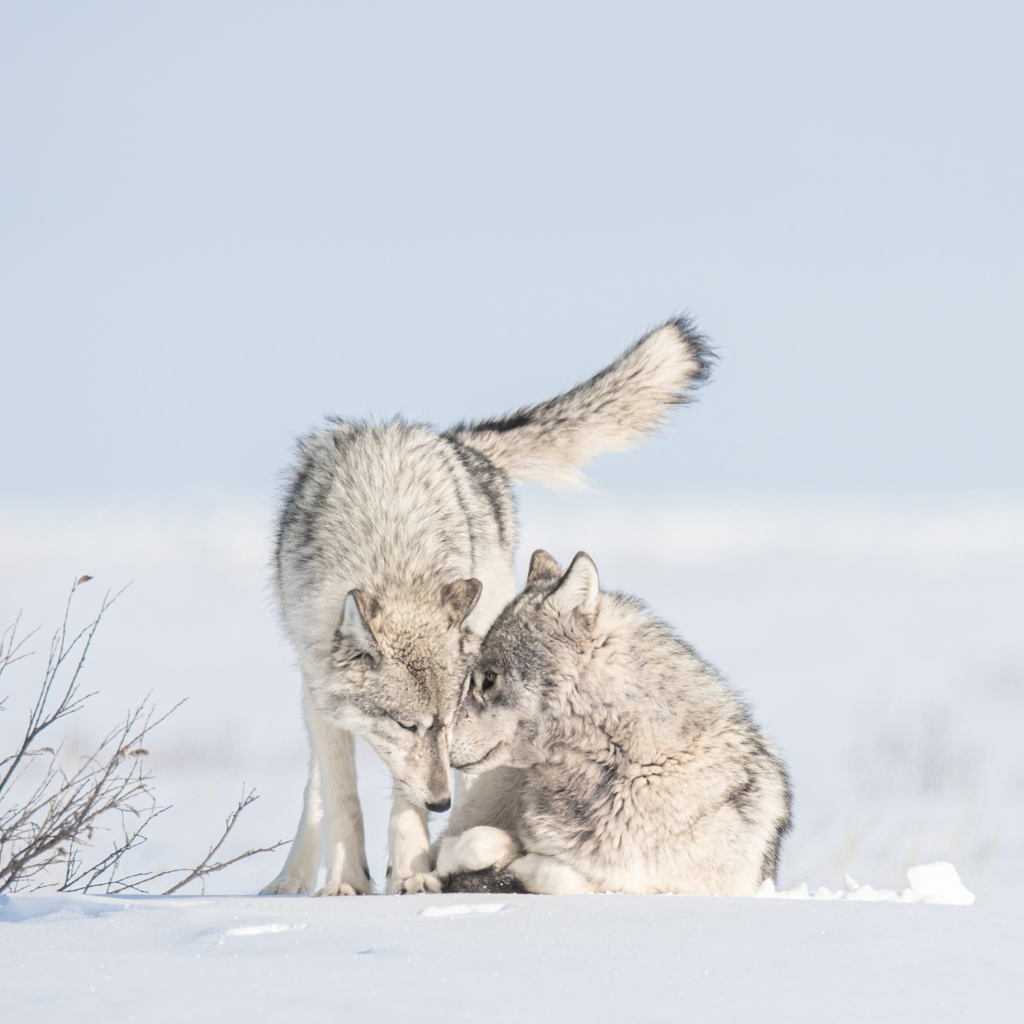
Sentimental secrets. Wolf couple at Nanuk Polar Bear Lodge. Jad Davenport photo. National Geographic Image Collection.
Packs will always have an alpha male and an alpha female, and while a pack size of six to 10 is most common, they can be as large as two dozen individuals. A few years ago, we had a pack of 13 wolves that frequently came past Nanuk Polar Bear Lodge! They would snack on berries outside the compound, nap on the runway, wrestle in the willows, and at night we’d fall asleep to their howls and calls.
Though we inhabit their space for a few months of the year, we don’t threaten them or their food supply, so their reaction to us when we encounter them out on an excursion is one of curiosity more than fear or apprehension. (See? We really can all get along if we respect one another!)
The wolves we see range in colour from black to tawny, though grey wolves can also have brown, reddish or even predominantly white fur. Like polar bears, wolves exhibit sexual dimorphism, with females being roughly 20 percent smaller than males. Depending on their geographic location, wolves will range from about 15 to 65 kilograms (33 to 143 pounds).
The alpha male and female are the only pack members to breed. This controls the population and health of the pack given that most of the other pack members are offspring of the alphas and therefore siblings. Females birth only one litter a year, usually having four to six pups in the spring after a short nine-week gestation.
Similar to the way in which polar bears build their dens in the riverbanks of the waterways near Nanuk Polar Bear Lodge, wolves will dig into soil such as that of eskers or gravel ridges. After a few months, the pups start playing outside the den as a precursor to learning hunting skills.
Once wolf pups reach sexual maturity between the ages of two and three, many will leave their pack in search of their own territory and mate.
Why are we so fascinated by wolves?
Besides the obvious things like their haunting howls and almost mythical beauty, why are humans so taken with wolves? Is it because they’re so elusive and so many of us are constantly chasing that which eludes us? They’re at the top of the food chain in the animal kingdom and have a very distinct pack hierarchy, so maybe it’s because we, as humans, can relate to this need to reign over overs?
Maybe some of you relate to lone wolves, those who are looking for a pack to fit into, a community, a sense of belonging. Or maybe, because our two species used to live in harmony, we’ll always feel a connection with wolves. Whatever scenario resonates with you most, I think we can all agree that wolves are spectacular creatures worthy of all the fascination and respect we channel towards them. Plus, our pet dogs can be traced back to wolves, so in a far, far removed way, we’re living with wolves, and that’s pretty cool.
Quick Wolf Facts
- A wolf’s top speed is between 50 and 60 km/h (about 35 mph).
- You can tell which wolf is the Alpha (top dog!) in the pack by its body language. Alphas will stand more erect with their tales held higher than lower-ranking wolves who will slouch toward the ground.
- Wolf pups weigh about one pound at birth – the same as polar bear cubs!
- Gray wolves live an average of five to six years in the wild, though some live up to thirteen years.
- A wolf pack will only have a successful hunt about 10% of the time.
Resources:

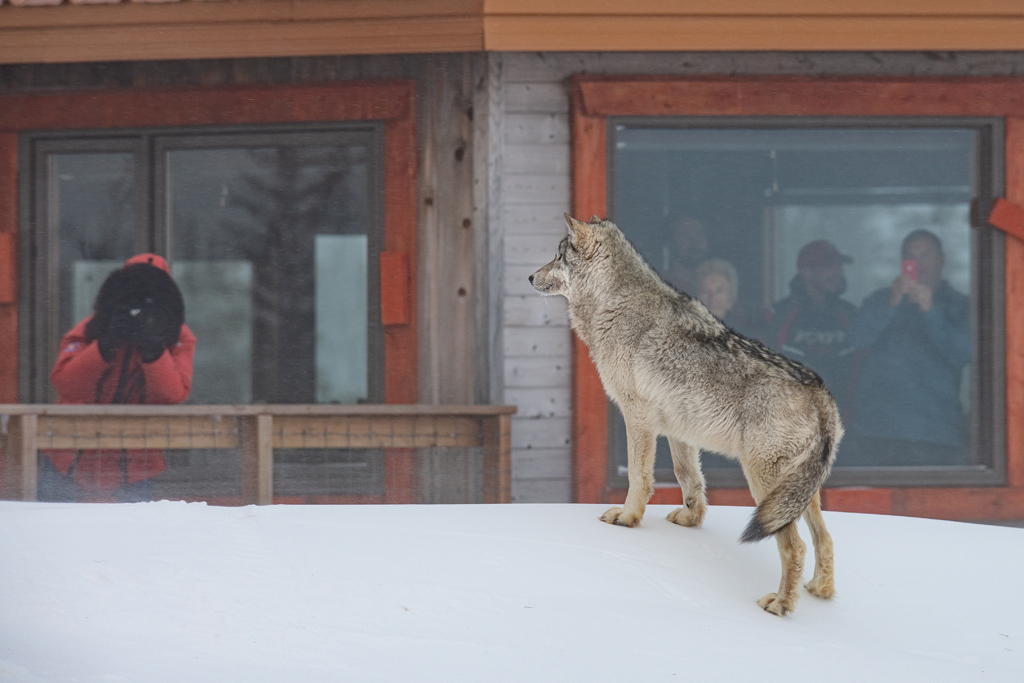
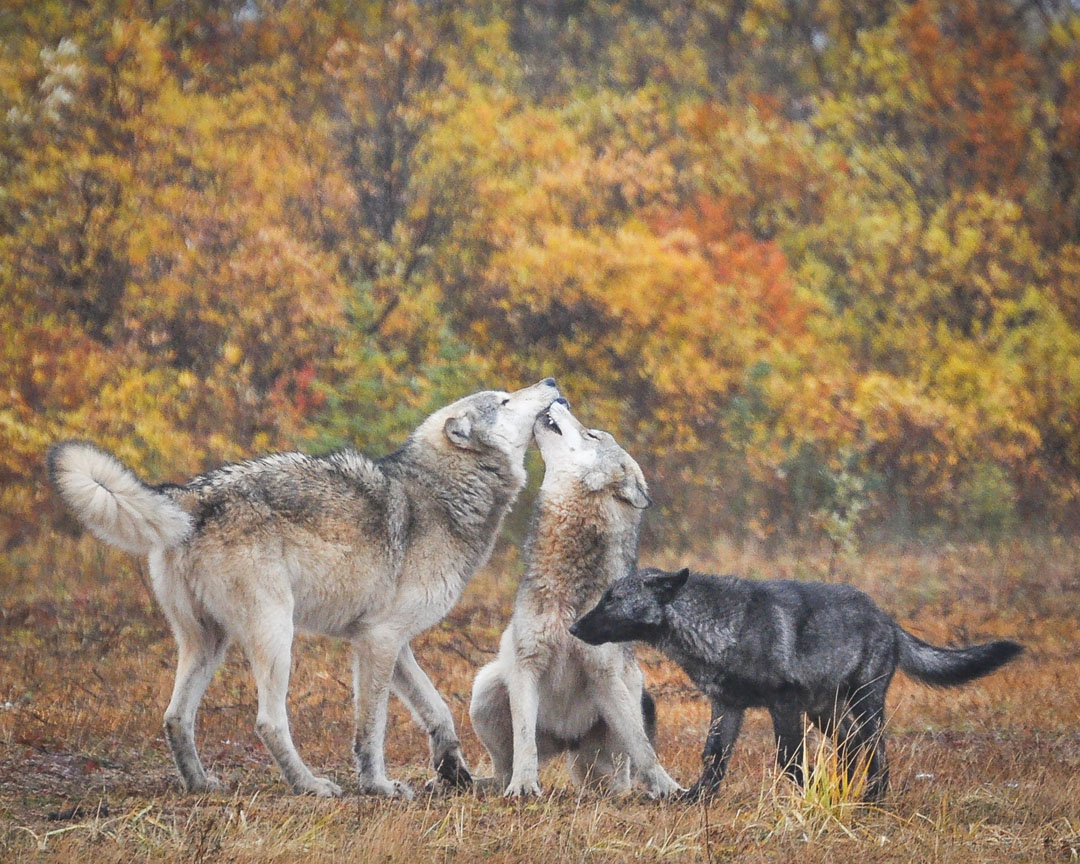

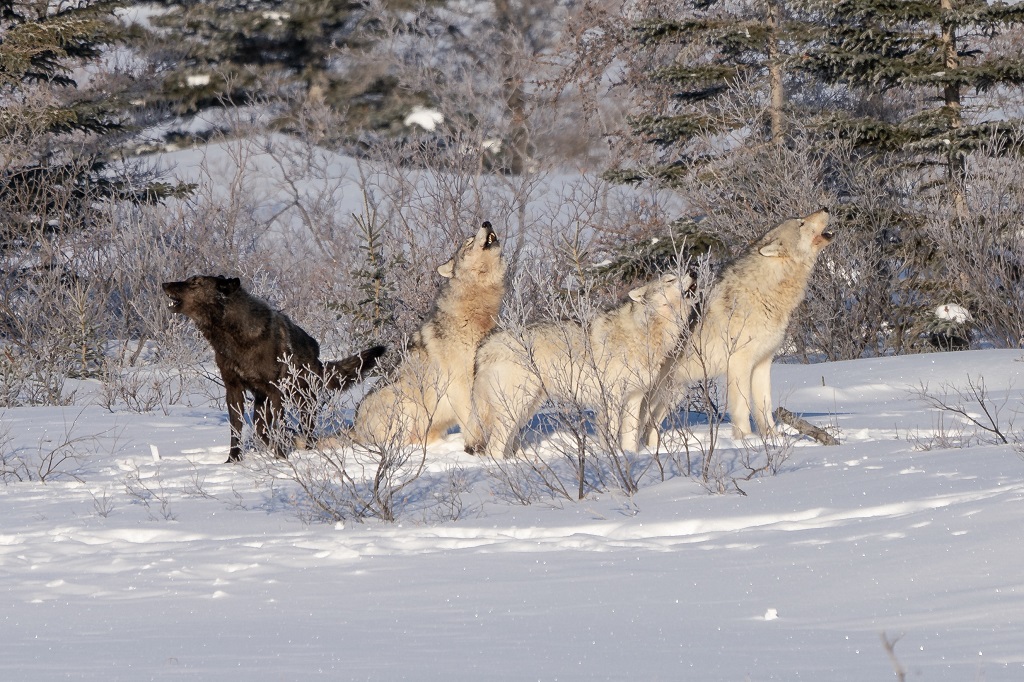
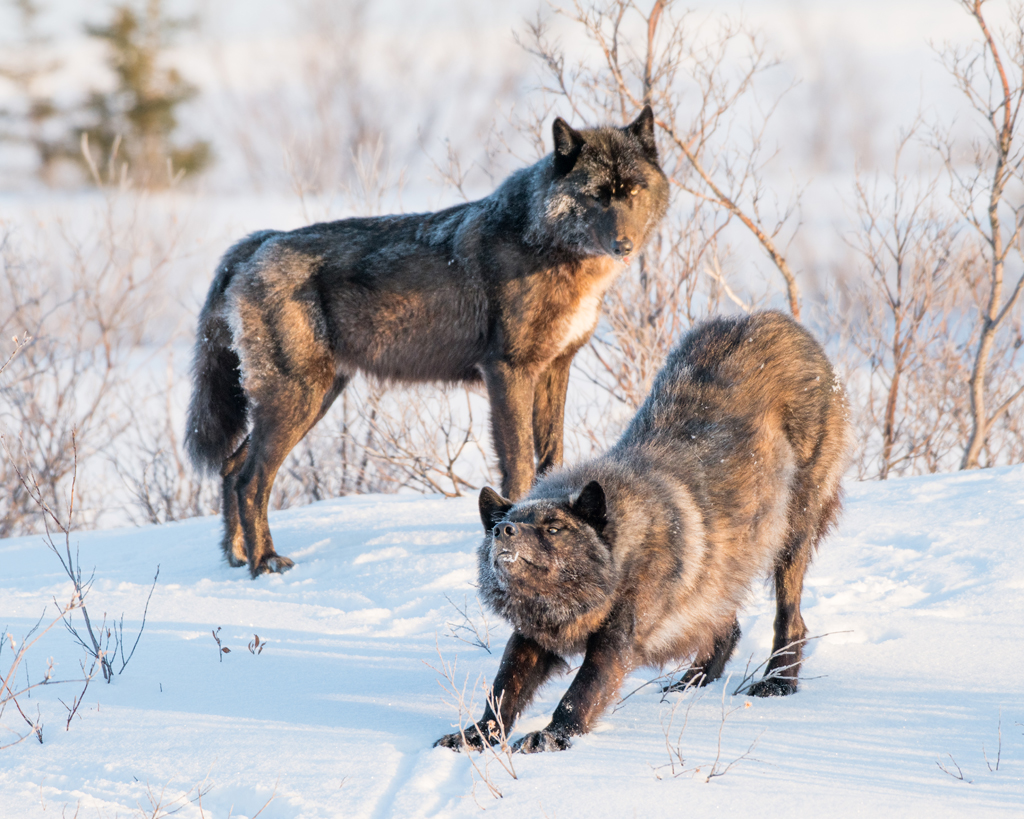
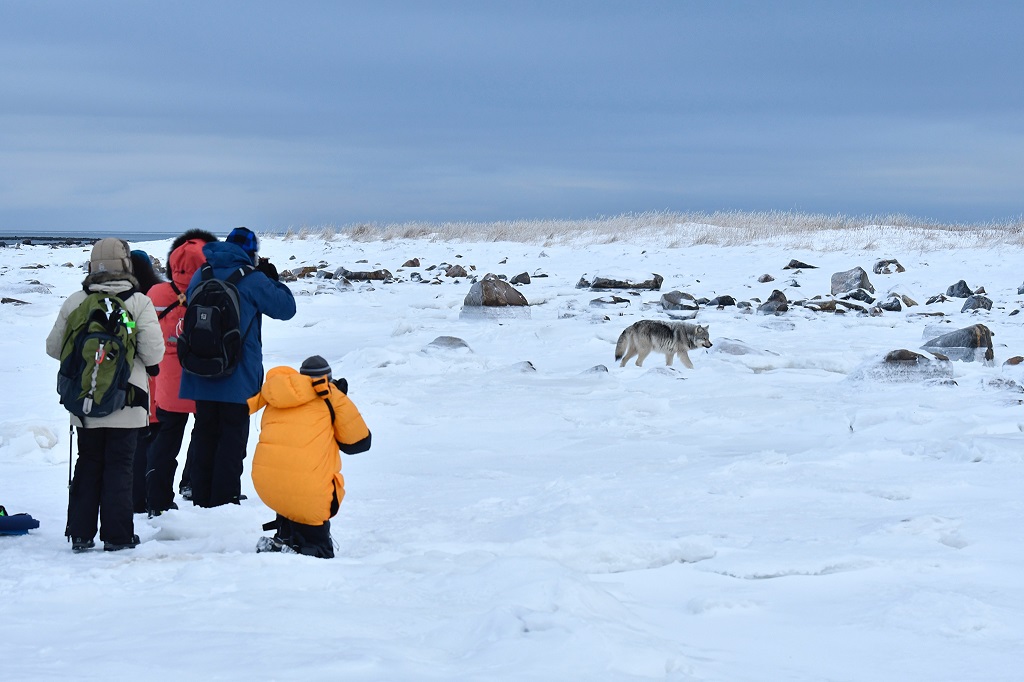
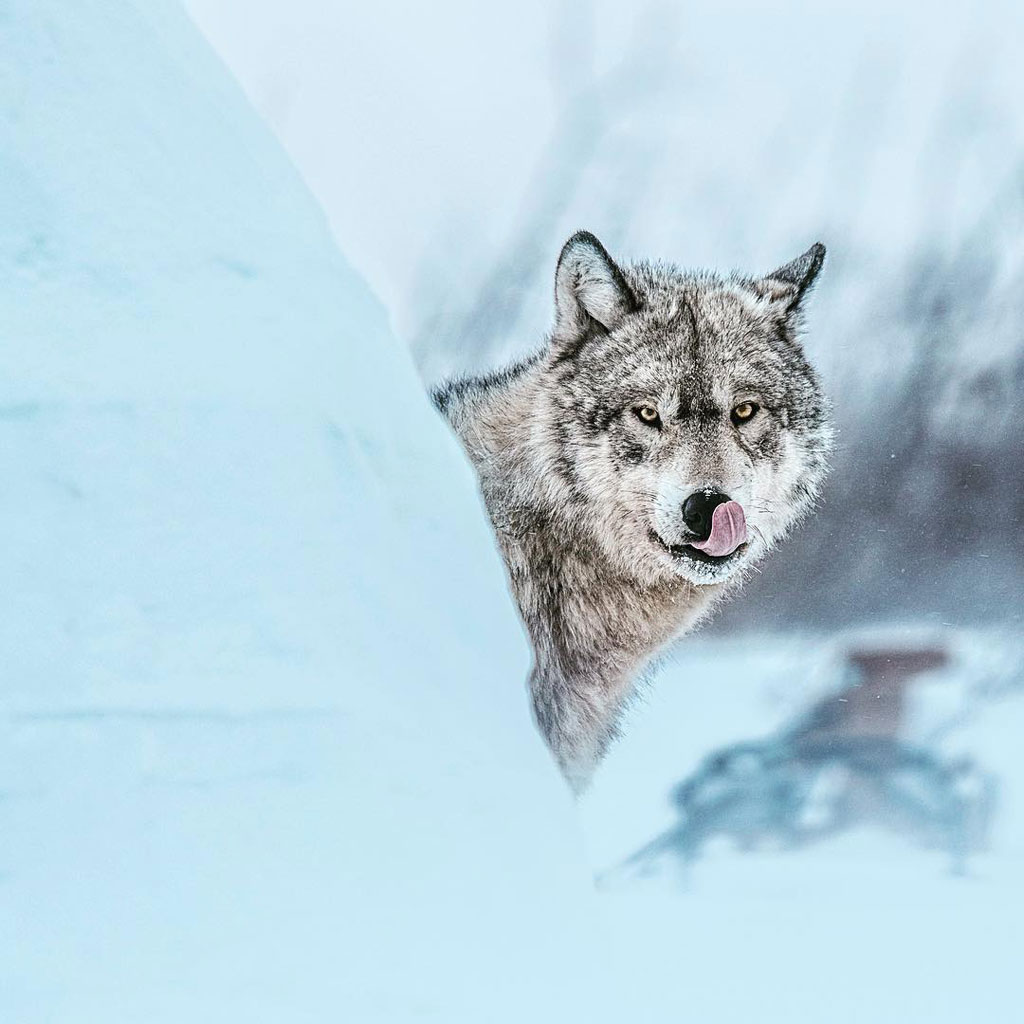








You guys have done a wonderful job I love wolves and even had the job of raise a few when I was younger and I lived with my grandfather.
Thanks for all your doing your doing great thanks again